When it comes to learning how to burn, we often start off with no particular idea how to get started. This can lead us down many a blind alley into the darkness of ignorance and frustration. I know because when I was learning I probably took more wrong turns than most. But if I had to pick the one thing that I learned that helped my playing get on track, it was Diatonic scale sequences. These are sometimes referred to as stepwise scale sequences. The idea is to do a repeating pattern through a scale shape. If you do it really, really fast, you have reached shredhood. But only the front gate of shredhood. Further inside you are gonna find all sorts of Harmonic and Melodic minors scales, as well as. Symmetrical patterns, Hexatonic scales, Chromatic and Synthetic scales. But that is okay, because there is probably no other tool that you will lean on as often a sequences. Let's get right to them, shall we?
These are four note per beat scale sequences. The first is called groups of four; the second is called diatonic thirds. Of course you could also just play a straight ascending and descending scale in sixteenth notes if you would like.
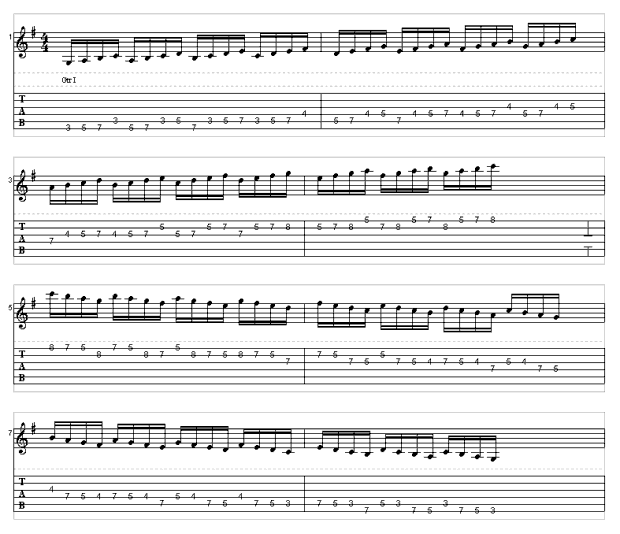
This one is really great and versatile. If you like Randy Rhoads, you have heard it in action. In fact I would say that it is one of the most common sequences guitarists use.
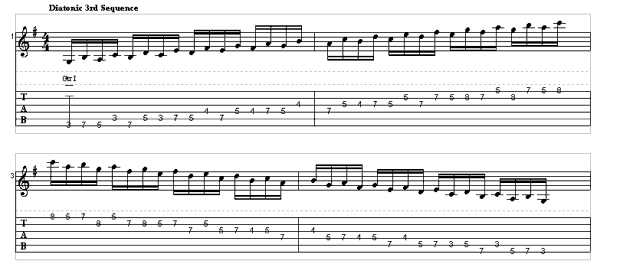
This sequence has a slightly jazzy vibe, but totally rocks when you put the spurs to it.
This one is a must if you want to shred. Thanks to the great Paul Gilbert, sextuplets have been a shred staple for nearly twenty years now. These are all played six notes per beat.
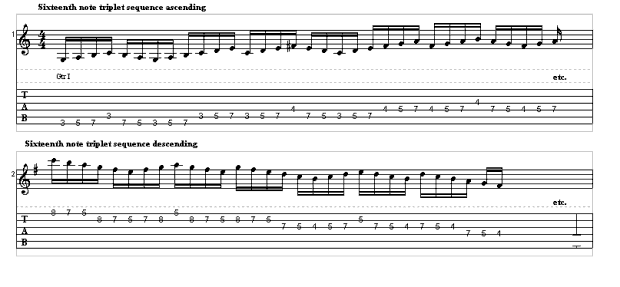
Thanks, Paul!
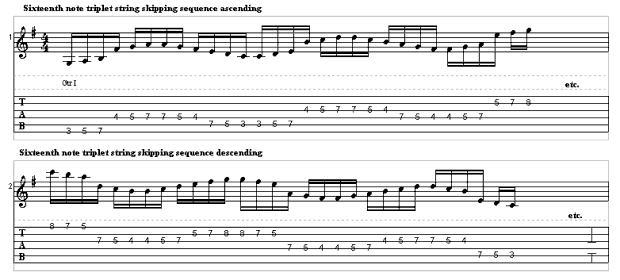
You skip strings, seems pretty straightforward really.
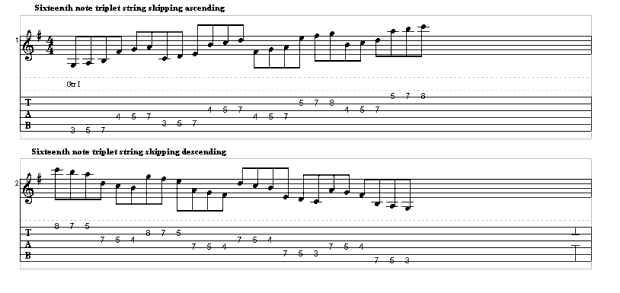
This is a very cool sounding string skipping lick that can add some spice to a lackluster solo.
The 32nd note sequence is made up of eight notes per beat. There is a slight chance of losing where you are over the metronome click, so I suggest accenting the first of every group of eight with an extra hard pick attack.

For some reason people always think of pentatonic scales as not very exciting. It's a scale for beginners some will say. Well, check out these totally sick variations on the venerable pentatonic. Did I mention that it requires three notes per string?
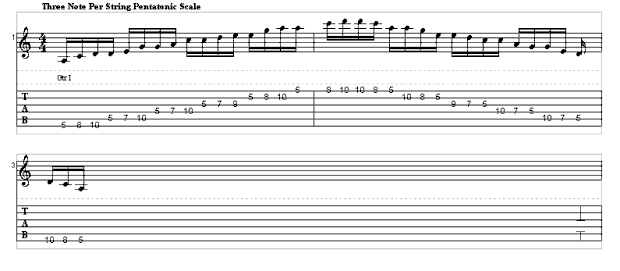
You will notice that you are repeating the same note as you ascend to the next string. Don't worry, at high speeds this sounds very different and interesting. Try applying some of the same sequencing ideas found earlier in this article to this scale for some interesting permutations. Of course if the repeated note thing gets on your nerves you can always just skip strings. It is one of the coolest sounding runs you will ever do a blinding speed.
So are these meant to be the be all, end all sequence licks? Not at all, these are merely a starting point to begin developing your lick vocabulary for Diatonic scales. Play them all to the metronome with the described notes per beat.
To develop speed you must experiment with each sequence to find out what is the fastest speed you can play it cleanly. This will be your max. Once your max is established, then you need to set goal tempos. A goal tempo should be ten-fifteen beats per minute faster than your max. Please give yourself a realistic amount of time to hit your new goal. Once you get there, set the goal just a little more out of reach. The bad news is that you will never really get to the end. The good news is that there is pretty much no limit to how fast you can get if you follow this method. Always start slower than your max and gradually work your way up to your goal tempo making sure to use proper technique every step of the way.
Once you have mastered the sequences plug them into all the patterns across the neck in every key. What's that? You don't know all of your Diatonic scales. No worries, I've thought of that.

Good luck and remember learning guitar is a process. Be patient with yourself, and I promise your patience will be rewarded.
Scott Allen is a 1996 graduate of the Musician's Institute, G.I.T. He currently teaches guitar to 65 to 70 students weekly at Northridge Music Center.
His latest CD is entitled "III", featuring his impressively fluid playing, with a style marked by an incendiary sense of phrasing.